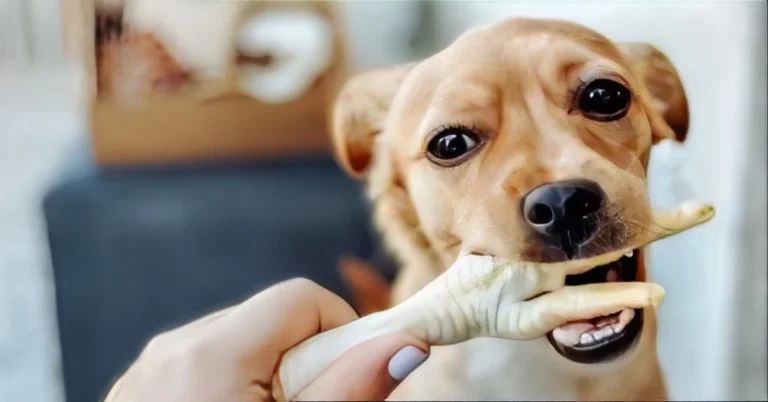Elbow Dysplasia In Dogs: Causes, Signs, Care, Life Expectancy
Elbow dysplasia in dogs is a common and debilitating condition that affects many dogs, particularly large and giant breeds. It is a developmental disorder that involves multiple abnormalities in the elbow joint, leading to pain, lameness, and decreased mobility.
This condition often manifests in young dogs, typically between 4 to 10 months of age, although symptoms may not become apparent until later in life.
Genetics play a significant role in the development of elbow dysplasia, but factors such as rapid growth, excessive weight, and certain dietary imbalances can also contribute to its onset.
Early detection and proper management are crucial in ensuring the best possible outcome for affected dogs.

Causes of Elbow dysplasia in dogs
Elbow dysplasia in dogs is a complex condition that can be influenced by various factors, both genetic and environmental.
While the exact cause of elbow dysplasia is not fully understood, several key factors have been identified that contribute to its development.
Genetics:
Genetics play a significant role in the development of elbow dysplasia. Certain breeds, such as Labrador Retrievers, Golden Retrievers, German Shepherds, and Rottweilers, are more prone to the condition.
It is believed that these breeds may have a genetic predisposition to abnormalities in the development of the elbow joint.
Rapid growth:

Rapid growth during puppyhood has been identified as a risk factor for elbow dysplasia. Dogs that grow too quickly are more likely to develop abnormalities in their joint development, leading to elbow dysplasia later in life.
Excessive weight:
Excessive weight puts added stress on the joints, including the elbows. Dogs that are overweight or obese are at a higher risk of developing elbow dysplasia, as the extra weight can exacerbate existing joint abnormalities.
Dietary factors:
Poor nutrition or an imbalance in essential nutrients can affect the development of the joints, including the elbows.
A diet lacking in essential nutrients such as calcium, phosphorus, and vitamin C can contribute to the development of elbow dysplasia.
Trauma:
Traumatic injury to the elbow joint, such as a fracture or dislocation, can increase the risk of developing elbow dysplasia.
Trauma can disrupt the normal development of the joint, leading to abnormalities that predispose the dog to the condition.
Understanding the causes of elbow dysplasia is crucial for dog owners and breeders to take preventive measures and reduce the risk of the condition in susceptible breeds.
By providing proper nutrition, managing growth rate, maintaining a healthy weight, and avoiding traumatic injuries, owners can help reduce the likelihood of their dogs developing elbow dysplasia.
Symptoms of Elbow dysplasia in dogs
Elbow dysplasia in dogs can cause a variety of symptoms that can range from mild to severe, depending on the extent of the joint abnormalities.
Recognizing these symptoms early is crucial for timely intervention and management of the condition. The following are important symptoms to be aware of:
Lameness:
One of the most common signs of elbow dysplasia is lameness, which may be intermittent or persistent. Dogs with elbow dysplasia may limp or favor one leg over the other, especially after exercise or periods of rest.
Stiffness:
Dogs with elbow dysplasia may exhibit stiffness in their front legs, particularly after getting up from a lying down position. This stiffness may improve with movement but can worsen with increased activity.
Pain:
Elbow dysplasia can cause varying degrees of pain in affected dogs. They may show signs of discomfort when the affected elbow is touched or manipulated, and they may be reluctant to put weight on the affected leg.
Decreased range of motion:
Dogs with elbow dysplasia may have a decreased range of motion in the affected elbow joint. This can manifest as difficulty extending or flexing the elbow, leading to a noticeable change in their gait.
Muscle atrophy:
Chronic elbow dysplasia can lead to muscle atrophy, or the wasting away of muscle tissue, in the affected leg. This can be observed as a decrease in muscle mass and tone in the affected limb.
Joint swelling:
In some cases, elbow dysplasia can cause swelling and inflammation in the affected joint. This swelling may be accompanied by heat and redness around the joint.
Behavioral changes:
Dogs in pain may exhibit changes in behavior, such as increased irritability, restlessness, or reluctance to engage in physical activity.
It is important to note that the symptoms of elbow dysplasia can vary depending on the severity of the condition and the individual dog.
If you suspect that your dog may be suffering from elbow dysplasia, it is essential to consult with your veterinarian for a proper diagnosis and treatment plan. Early detection and intervention can help improve your dog’s quality of life and prevent the progression of the condition.
Treatment of Elbow dysplasia in dogs
Treatment for elbow dysplasia in dogs aims to reduce pain, improve joint function, and slow the progression of the disease.
The specific treatment approach will depend on the severity of the condition and may include a combination of medical management, lifestyle modifications, and surgical intervention. Here are some key facts about the treatment:
Weight control:

For dogs with elbow dysplasia, keeping a healthy weight is essential. Excess weight puts added stress on the joints, exacerbating the condition. A balanced diet and regular exercise can help manage weight and reduce strain on the elbows.
Exercise modification:
Dogs with elbow dysplasia may benefit from modifications to their exercise routine. Low-impact activities, such as swimming or short walks, can help maintain muscle strength and joint mobility without putting excessive strain on the elbows.
Pain management:
Pain medication, such as nonsteroidal anti-inflammatory drugs (NSAIDs), may be prescribed to alleviate pain and inflammation associated with elbow dysplasia. These medications can help improve your dog’s comfort and mobility.
Physical therapy:
Physical therapy techniques, such as massage, stretching, and range-of-motion exercises, can help improve joint function and reduce stiffness in dogs with elbow dysplasia. A licensed veterinary physical therapist can develop a customized treatment plan for your dog.
Nutritional supplements:
Supplements such as glucosamine and chondroitin sulfate may help support joint health and reduce the progression of elbow dysplasia. Omega-3 fatty acids can also help reduce inflammation and improve joint mobility.
Surgery:
In severe cases of elbow dysplasia, surgical intervention may be necessary. There are several surgical options available, including arthroscopy, joint replacement, and osteotomy, which aim to improve joint alignment and reduce pain.
Follow-up care:
Regular follow-up visits with your veterinarian are essential to monitor your dog’s progress and adjust treatment as needed. Your veterinarian may recommend periodic X-rays to evaluate the progression of the disease and the effectiveness of treatment.
Overall, the treatment of elbow dysplasia in dogs requires a comprehensive approach that addresses pain management, joint health, and lifestyle modifications. With proper care and management, dogs with elbow dysplasia can lead happy, comfortable lives.
Elbow dysplasia in dogs life expectancy
Elbow dysplasia is a condition that can significantly impact a dog’s quality of life, but with proper management, many affected dogs can live long and fulfilling lives.
The life expectancy of a dog with elbow dysplasia can vary depending on several factors, including the severity of the condition, the dog’s overall health, and the effectiveness of treatment. Here are some key facts about the life expectancy:
Impact of severity:
The severity of elbow dysplasia can have a significant impact on a dog’s life expectancy. Dogs with mild forms of the condition may experience minimal symptoms and have a normal life expectancy.
However, dogs with more severe forms of elbow dysplasia may have a shorter life expectancy due to the progression of joint damage and associated complications.
Effectiveness of treatment:
Proper treatment and management can help improve a dog’s quality of life and potentially extend their life expectancy.
Treatment options such as weight management, exercise modification, pain medication, and surgical intervention can help reduce pain, improve joint function, and slow the progression of the disease.
Overall health:
A dog’s overall health plays a crucial role in determining their life expectancy. Dogs with underlying health conditions or other joint issues may have a shorter life expectancy than dogs with elbow dysplasia as the primary health concern.
Breed and genetics:
Certain breeds are more prone to elbow dysplasia, and genetics can play a significant role in the development and progression of the condition.
Breeders can help reduce the risk of elbow dysplasia by screening breeding dogs for the condition and avoiding breeding dogs with a history of the disease.
Quality of life:
Ultimately, the goal of treatment for elbow dysplasia is to improve the dog’s quality of life.
With proper care and management, many dogs with elbow dysplasia can lead happy, comfortable lives, regardless of their life expectancy.
While elbow dysplasia can impact a dog’s life expectancy, proper treatment and management can help improve their quality of life and potentially extend their lifespan.
Working closely with your veterinarian to develop a comprehensive treatment plan is essential for ensuring the best possible outcome for your dog.
Is Elbow dysplasia in dogs painful?
Elbow dysplasia in dogs is a painful condition that can significantly impact their quality of life. This developmental disorder affects the elbow joint, causing abnormalities that lead to pain, lameness, and decreased mobility.
Here are some key facts about the pain associated with elbow dysplasia in dogs:
Joint inflammation:
Elbow dysplasia can cause inflammation in the affected joint, leading to pain and discomfort. This inflammation can result from abnormal joint structure, cartilage damage, and the body’s inflammatory response to the condition.
Progressive pain:
Elbow dysplasia is a progressive condition, meaning that it tends to worsen over time. As the disease progresses, the pain and discomfort experienced by affected dogs can become more severe.
Lameness:
Elbow dysplasia frequently manifests as lameness, or limping, which is frequently brought on by discomfort and instability in the afflicted joint. Dogs with elbow dysplasia may limp intermittently or consistently, depending on the severity of the condition.
Difficulty rising or moving:
Dogs with elbow dysplasia may have difficulty rising from a lying down position or moving around, particularly after periods of rest. This difficulty can be due to pain and stiffness in the affected joint.
Reluctance to exercise:
Elbow dysplasia can make exercise painful for affected dogs, leading to a reluctance to engage in physical activity. This can result in reduced muscle tone and overall fitness in dogs with the condition.
Behavioral changes:
Dogs in pain may exhibit changes in behavior, such as increased irritability, restlessness, or aggression. These behavioral changes can be a result of the discomfort caused by elbow dysplasia.
Pain management:
Proper pain management is crucial for dogs with elbow dysplasia to improve their quality of life. Your veterinarian may prescribe pain medications or recommend other treatment options to help alleviate your dog’s pain and discomfort.
Overall, elbow dysplasia in dogs is a painful condition that requires proper management to improve your dog’s comfort and quality of life.
If you suspect that your dog may be suffering from elbow dysplasia, it is essential to consult with your veterinarian for a proper diagnosis and treatment plan. Early detection and intervention can help alleviate your dog’s pain and improve their overall well-being.
See also: Hip dysplasia in dogs
Are Dogs Carnivores or Omnivores
Frequently Asked Questions
When a dog has elbow dysplasia, how long may they live? Even though elbow dysplasia is a chronic illness, your dog’s life shouldn’t be shortened by it.
A healthy diet, frequent exercise, and the right treatment may guarantee that you keep outstanding health and a high quality of life. Reducing activity due to discomfort may lead to issues like obesity.
According to Dr. Klein, the course of treatment for canine elbow dysplasia is determined by the dog’s age, level of lameness, and degree of joint deterioration.
“The greatest outcomes are commonly achieved with early intervention in young pups, and arthroscopic surgery is frequently recommended.”
Dogs who are afflicted typically exhibit stiffness, especially after lying down, lameness in one or both front legs, and resistance to activity.
The front limbs’ feet frequently seem turned out. Because of the aching elbows, descending stairs might be problematic at times.
Conclusion
In conclusion, elbow dysplasia in dogs is a painful condition that affects many large and giant breeds, typically manifesting in young dogs. Genetics, rapid growth, excessive weight, and dietary factors contribute to its development.
Symptoms include lameness, stiffness, pain, decreased range of motion, muscle atrophy, joint swelling, and behavioral changes. Treatment involves weight management, exercise modification, pain management, physical therapy, nutritional supplements, and surgery.
Despite its impact, with proper management, affected dogs can lead comfortable lives, and early intervention is key to improving their quality of life and potentially extending their lifespan.






